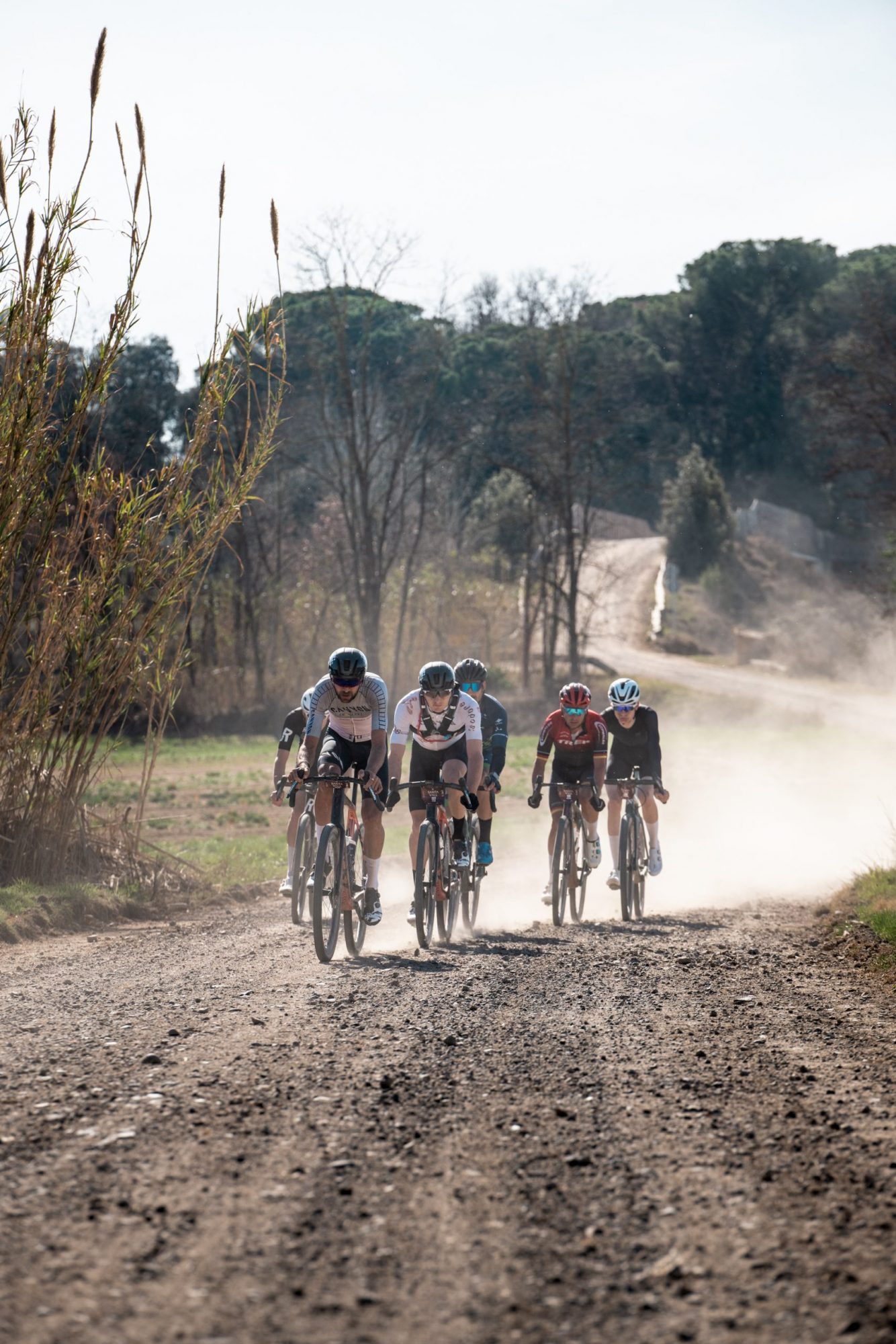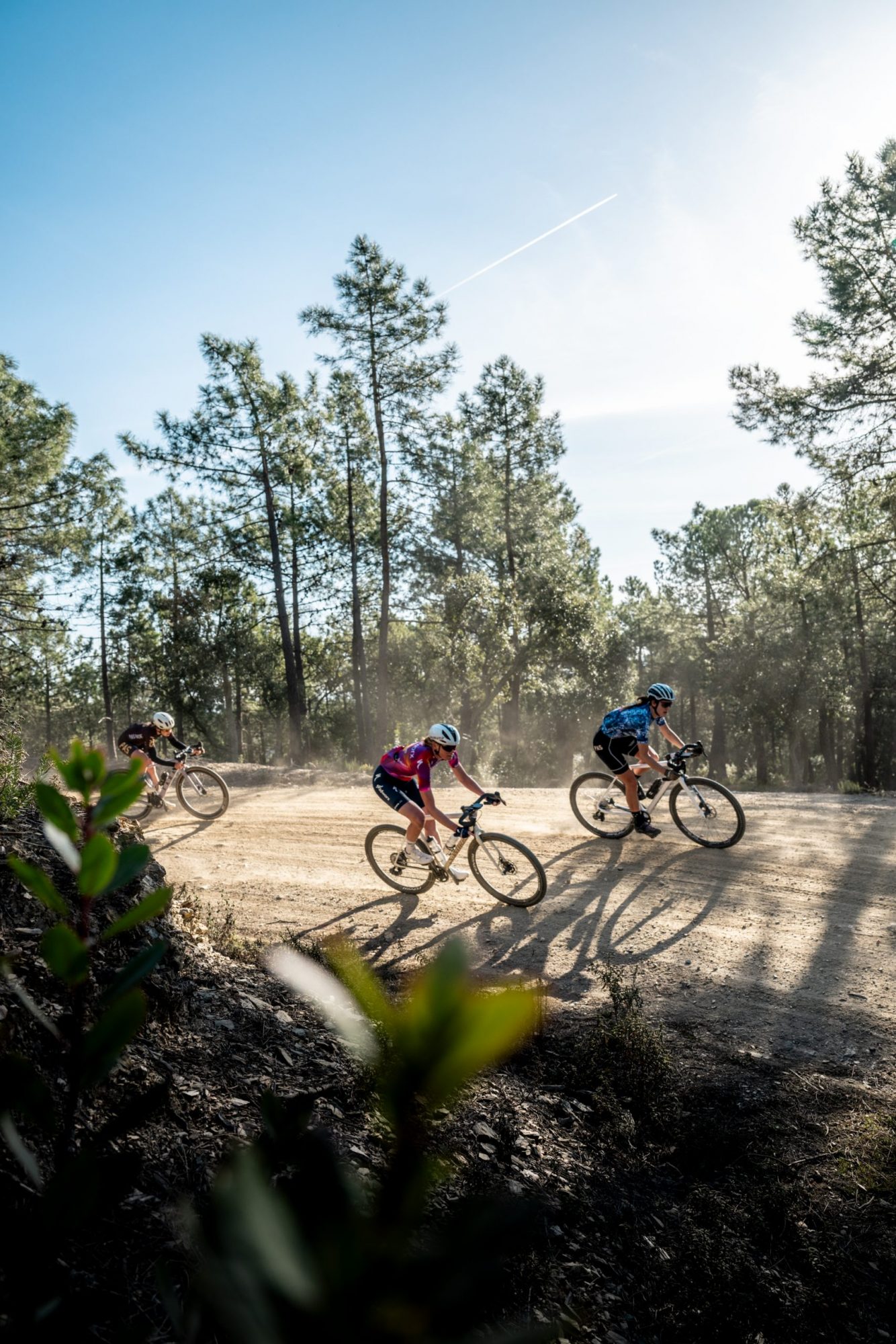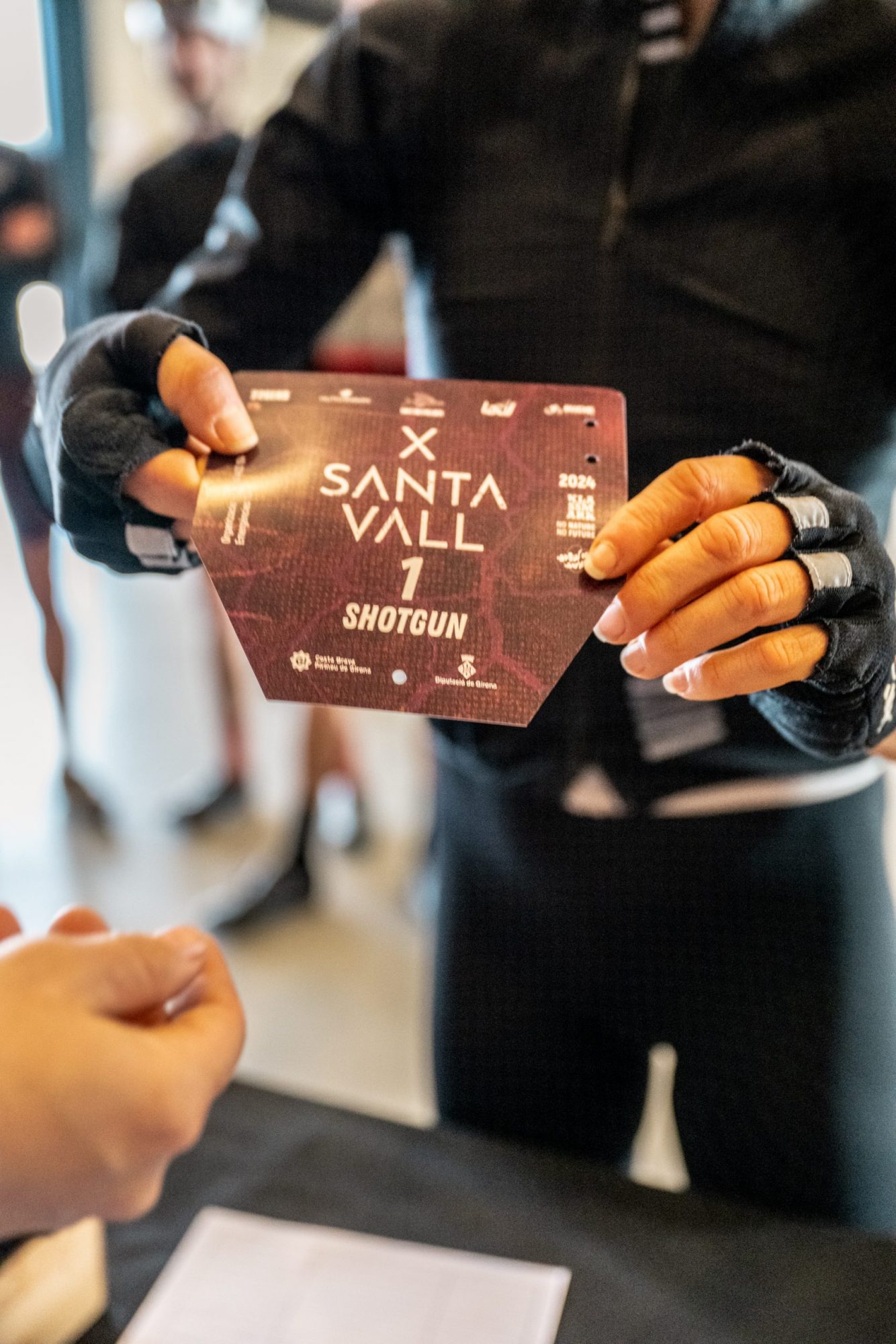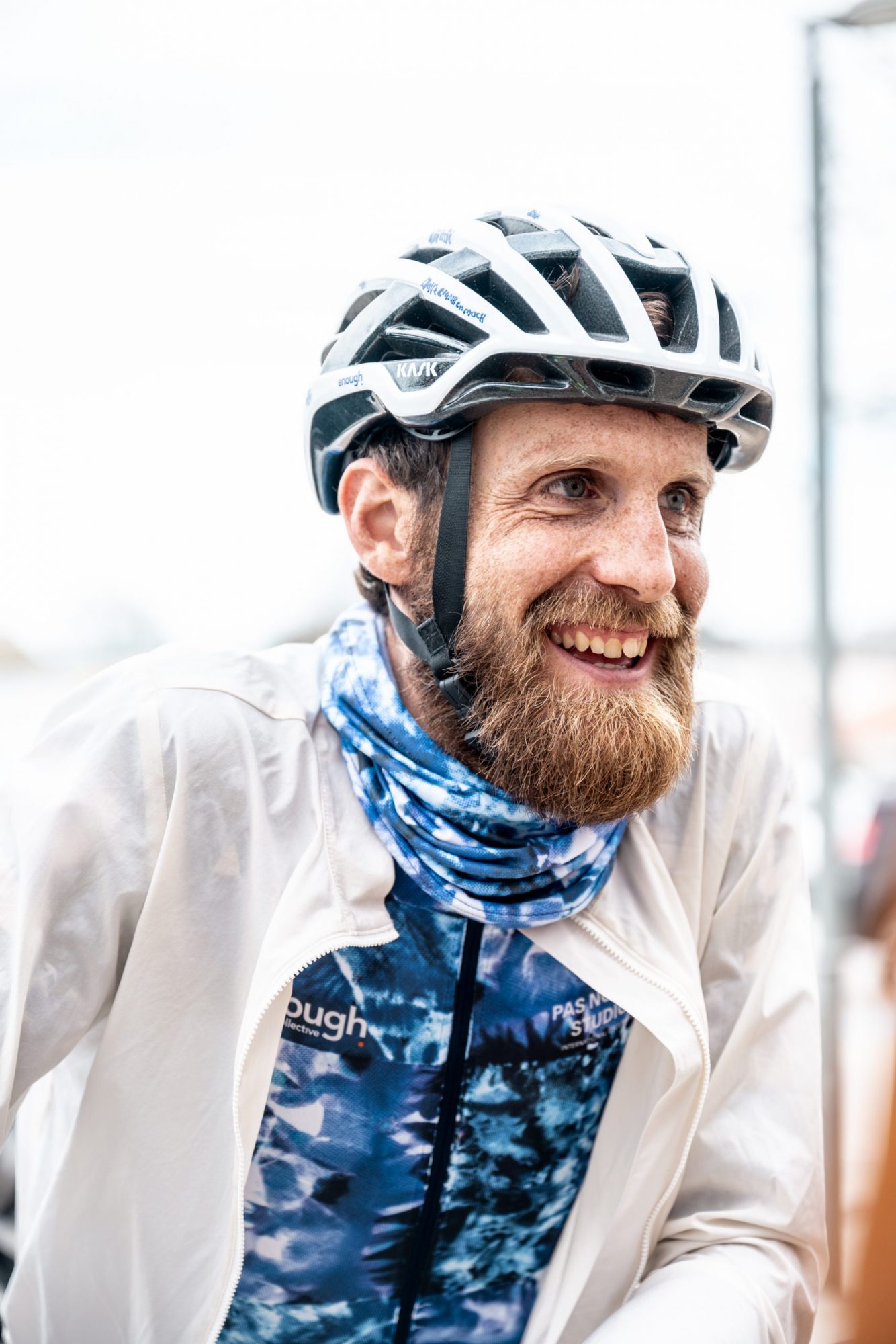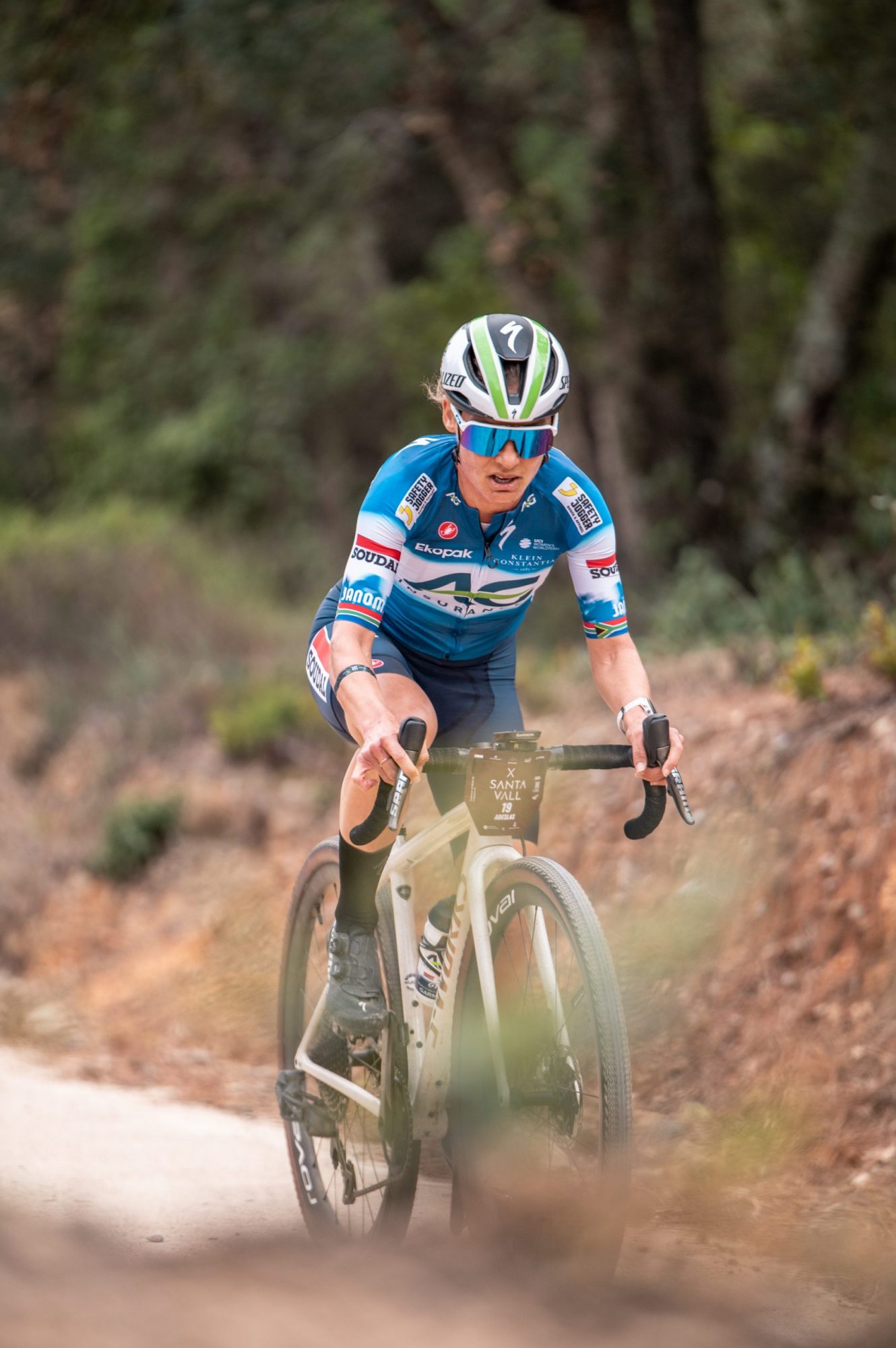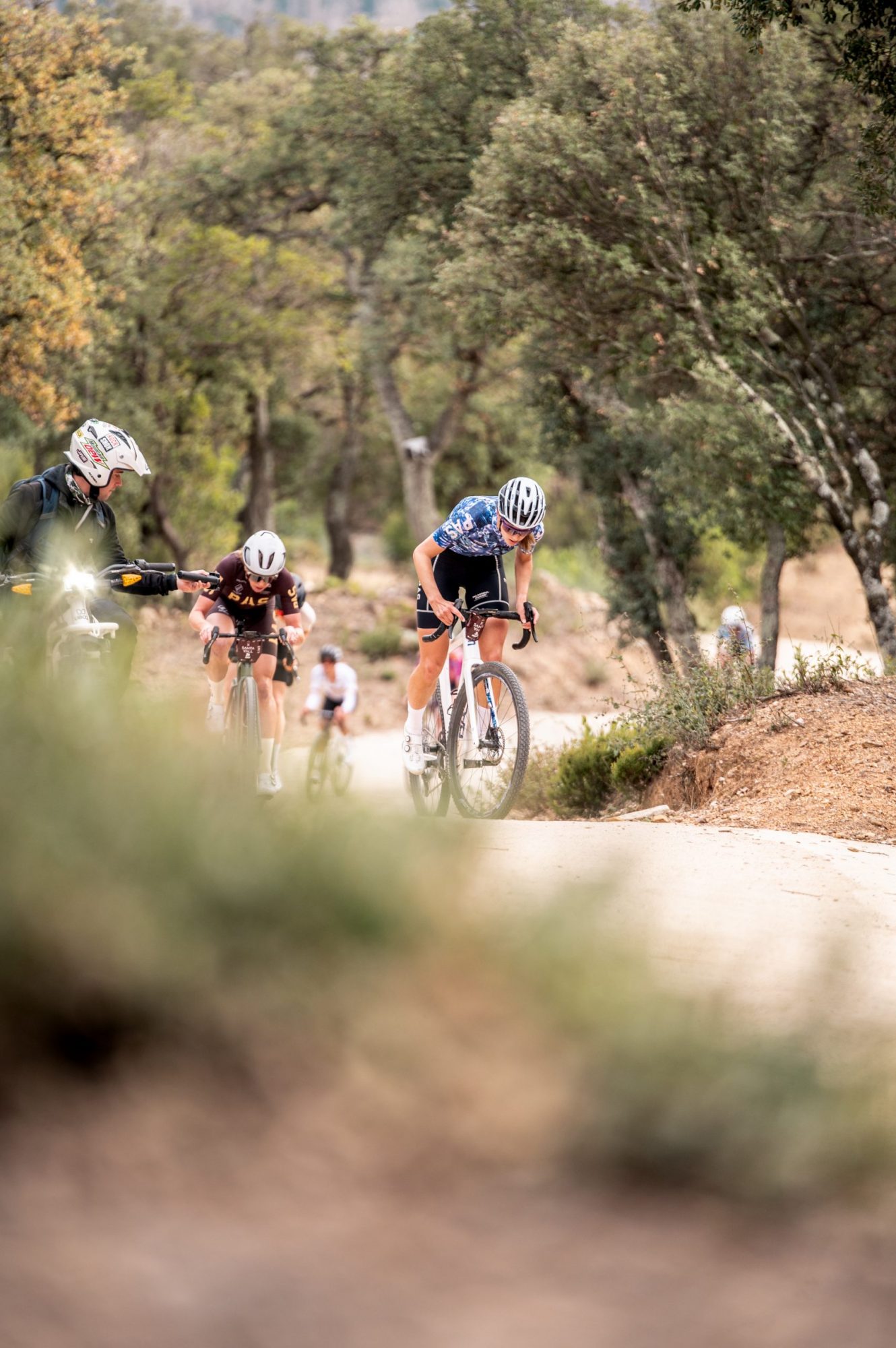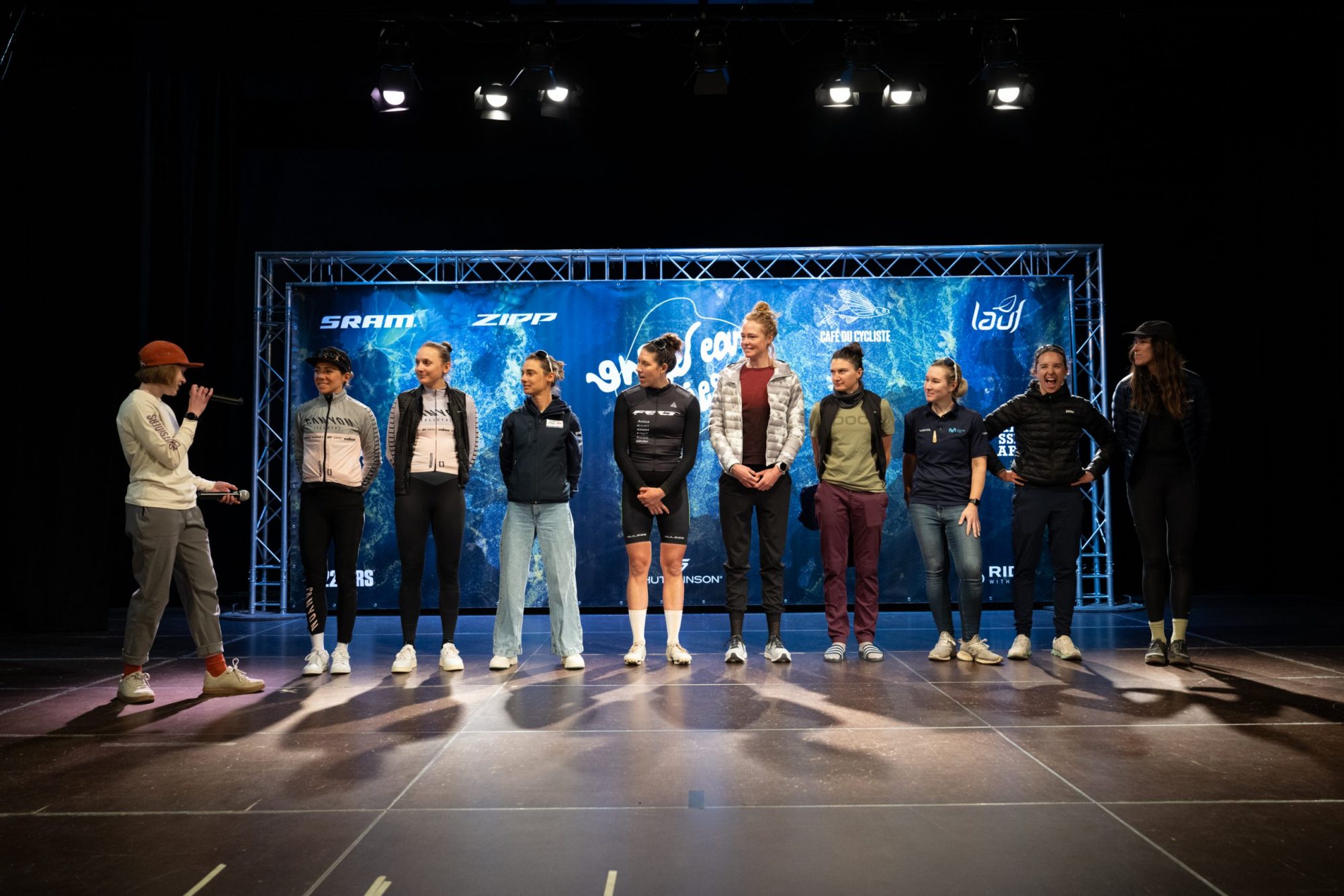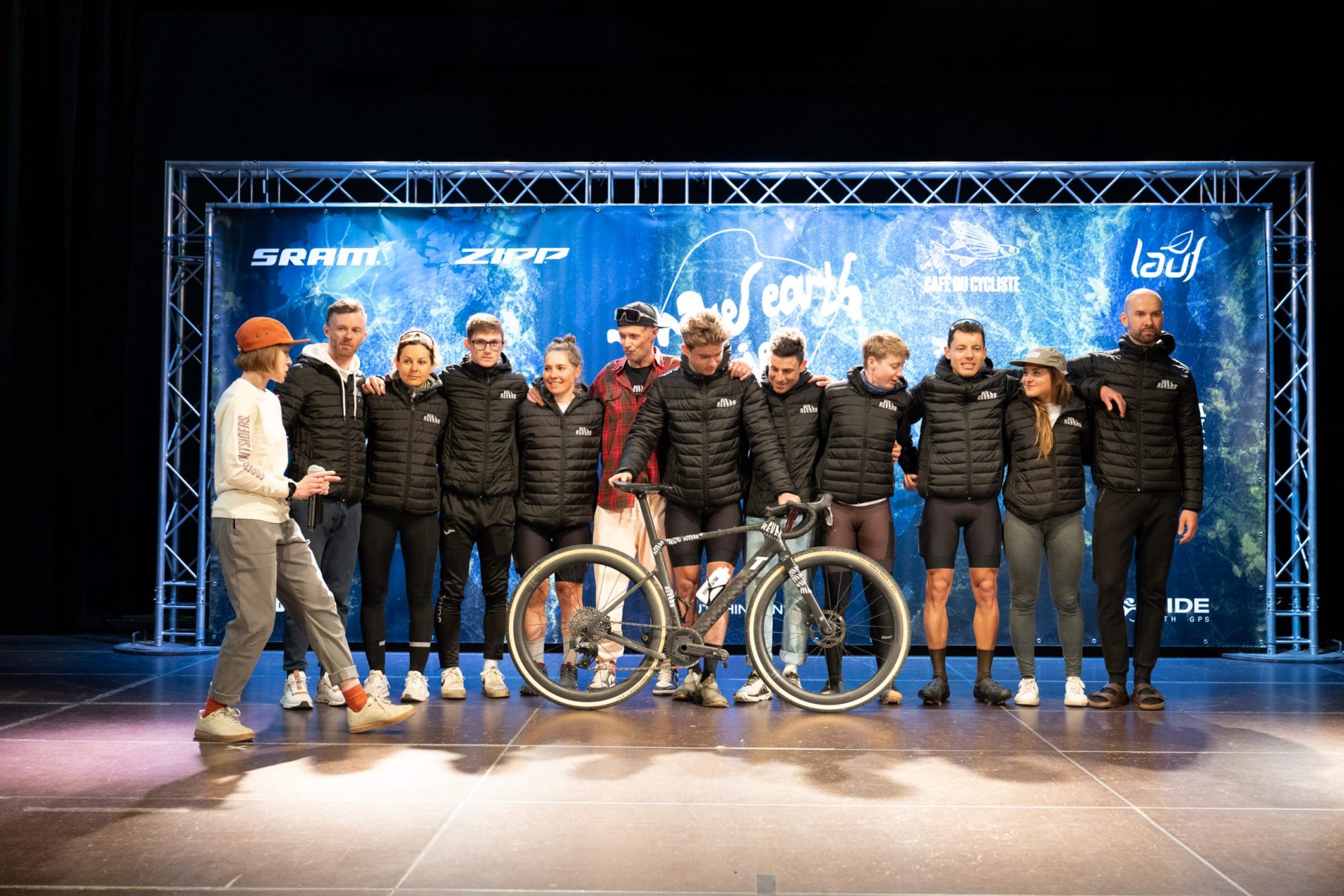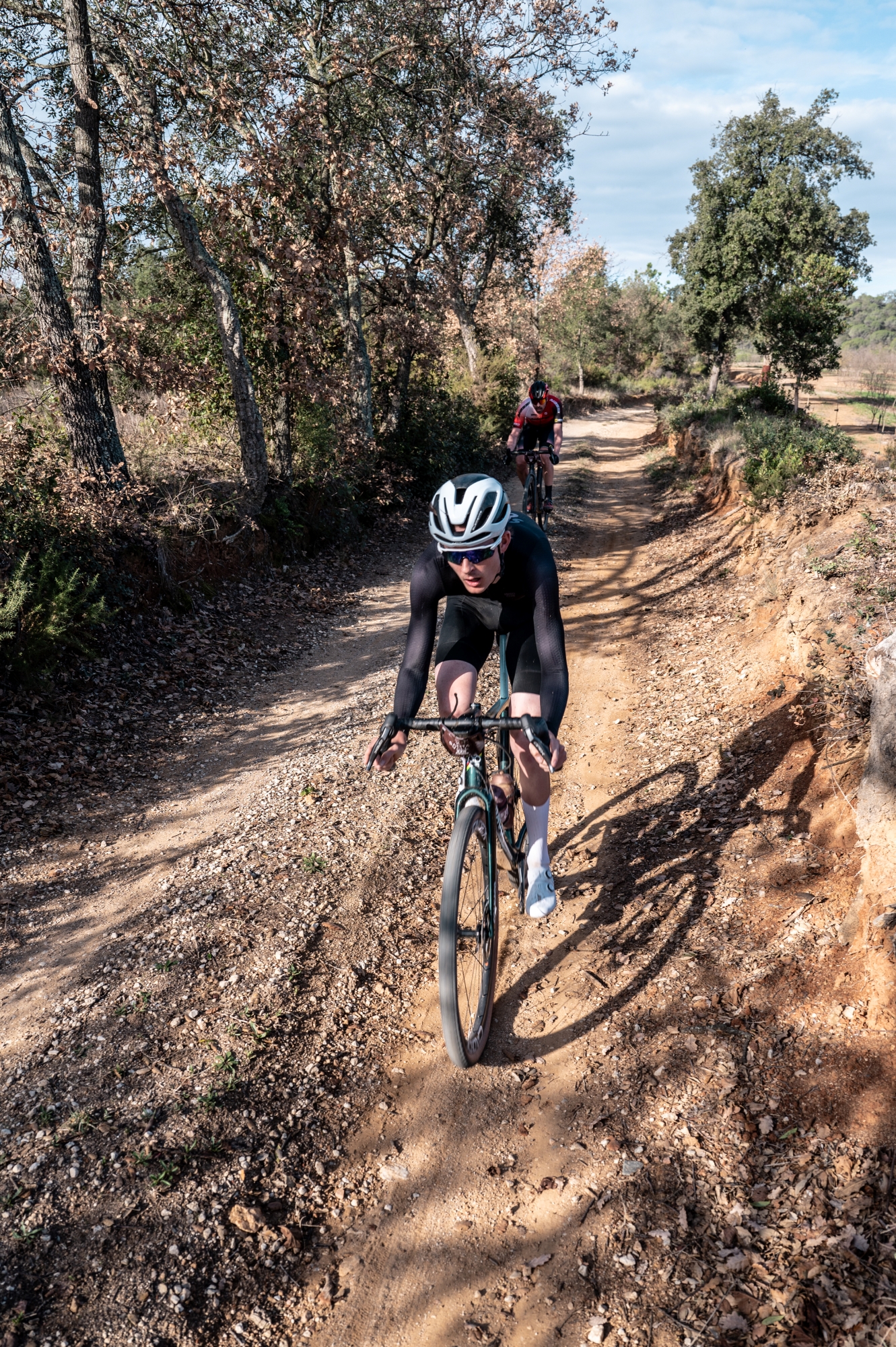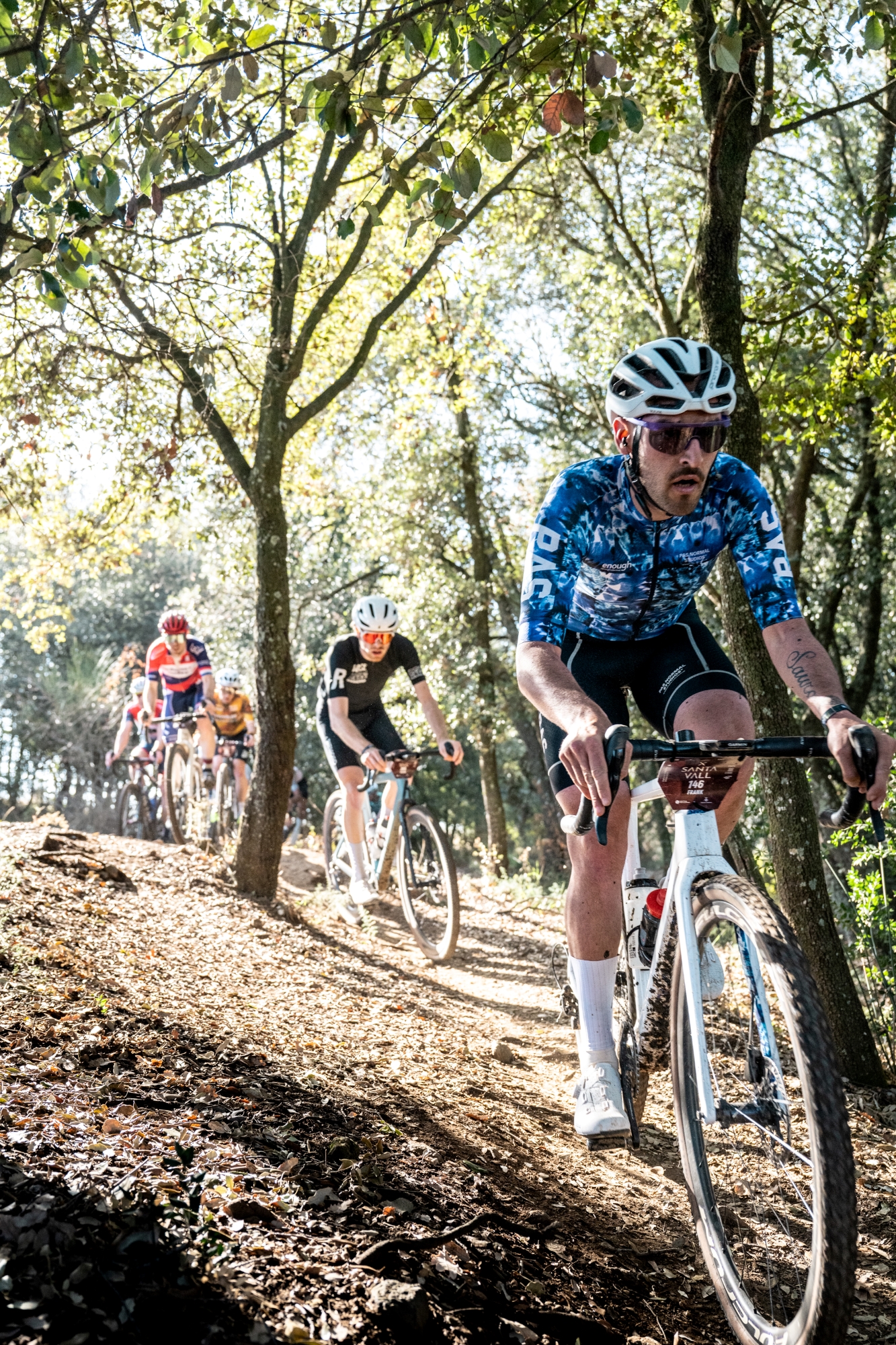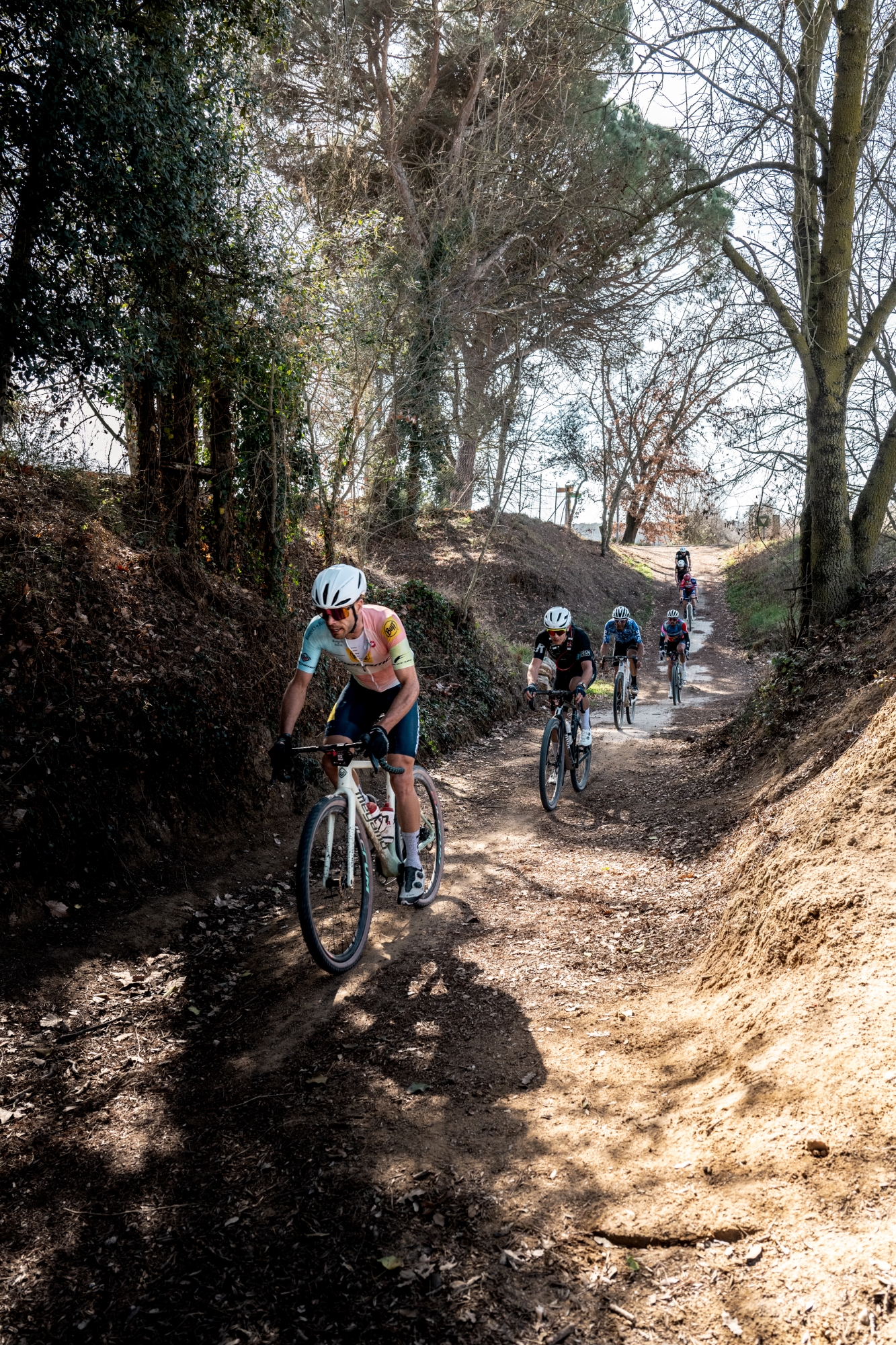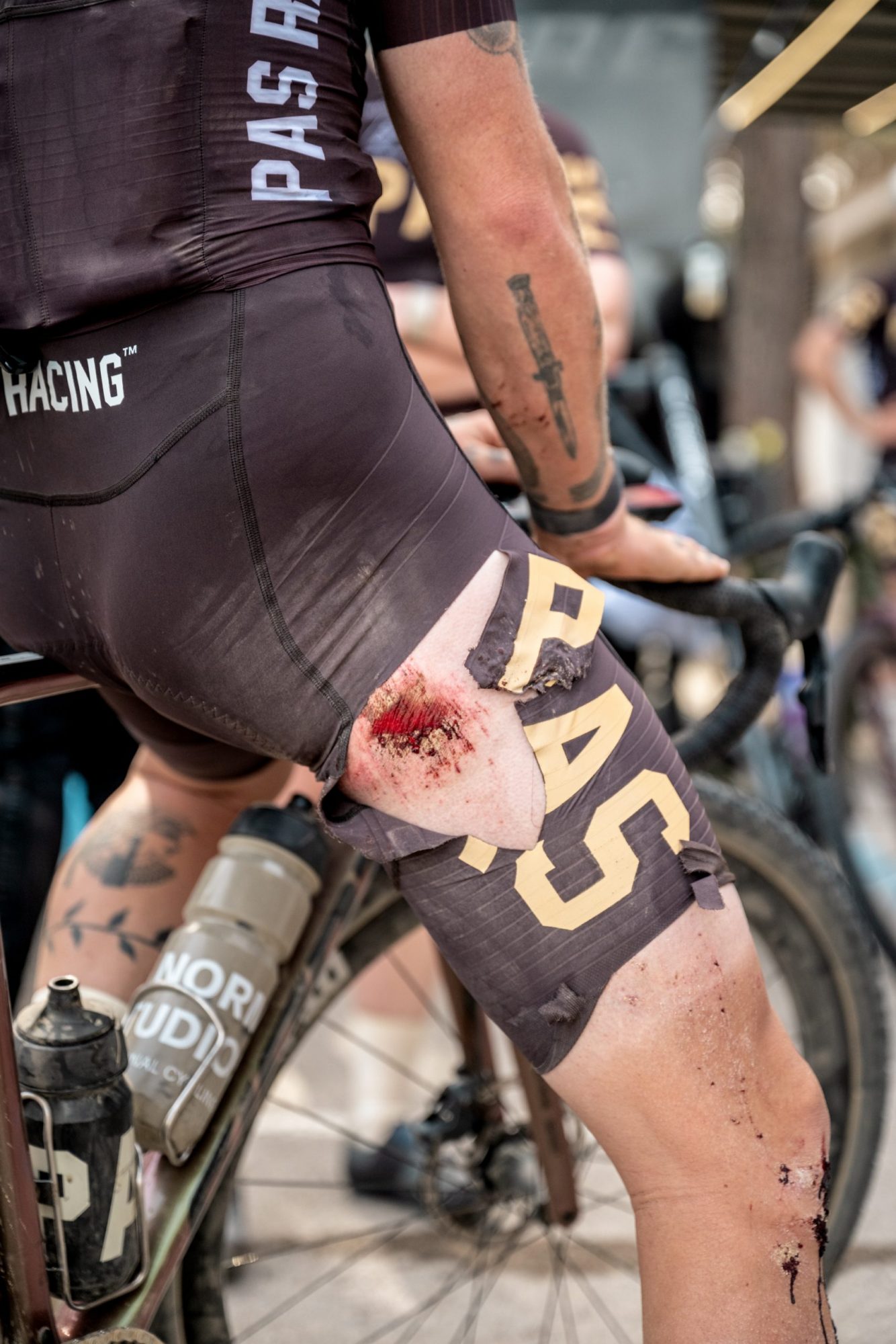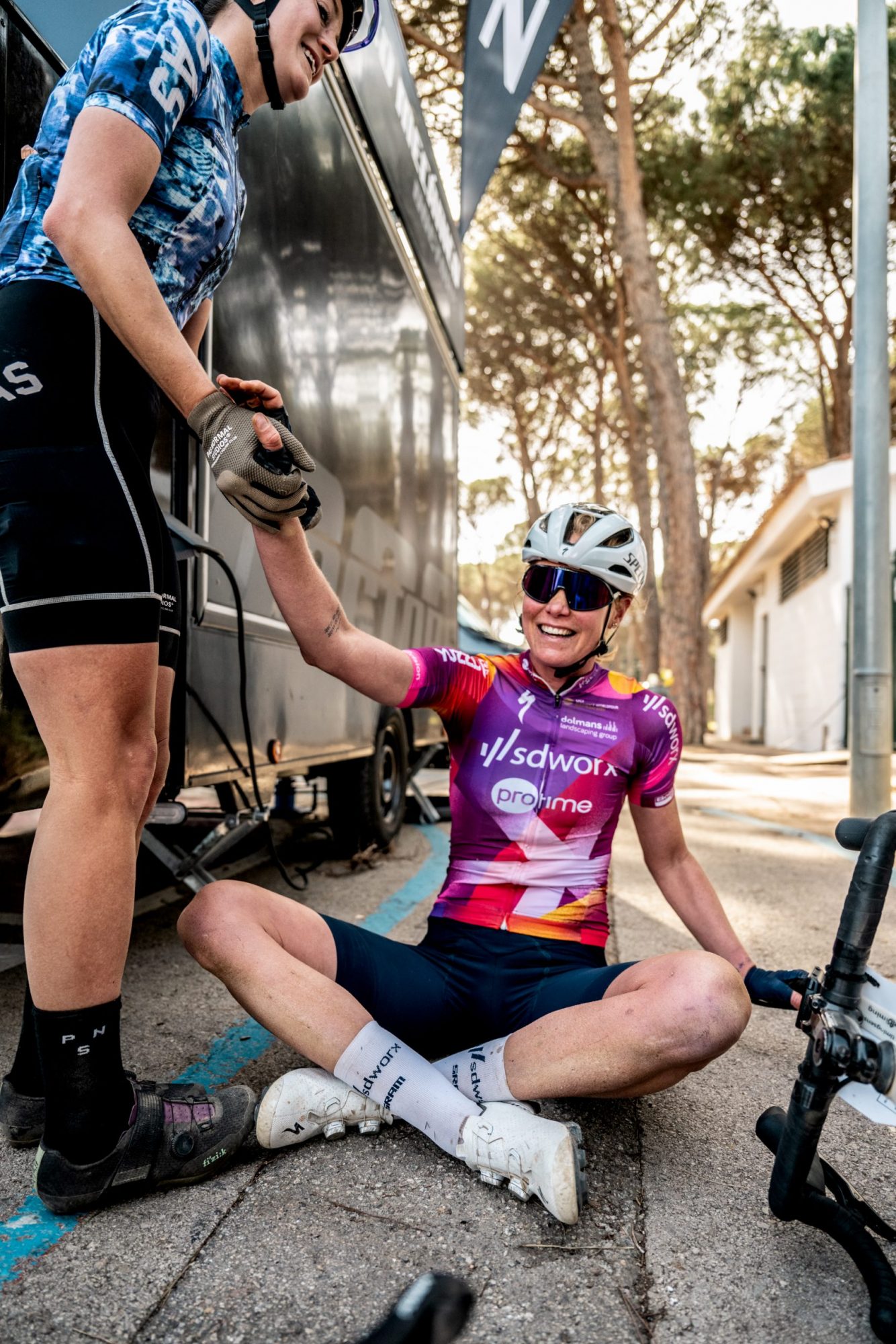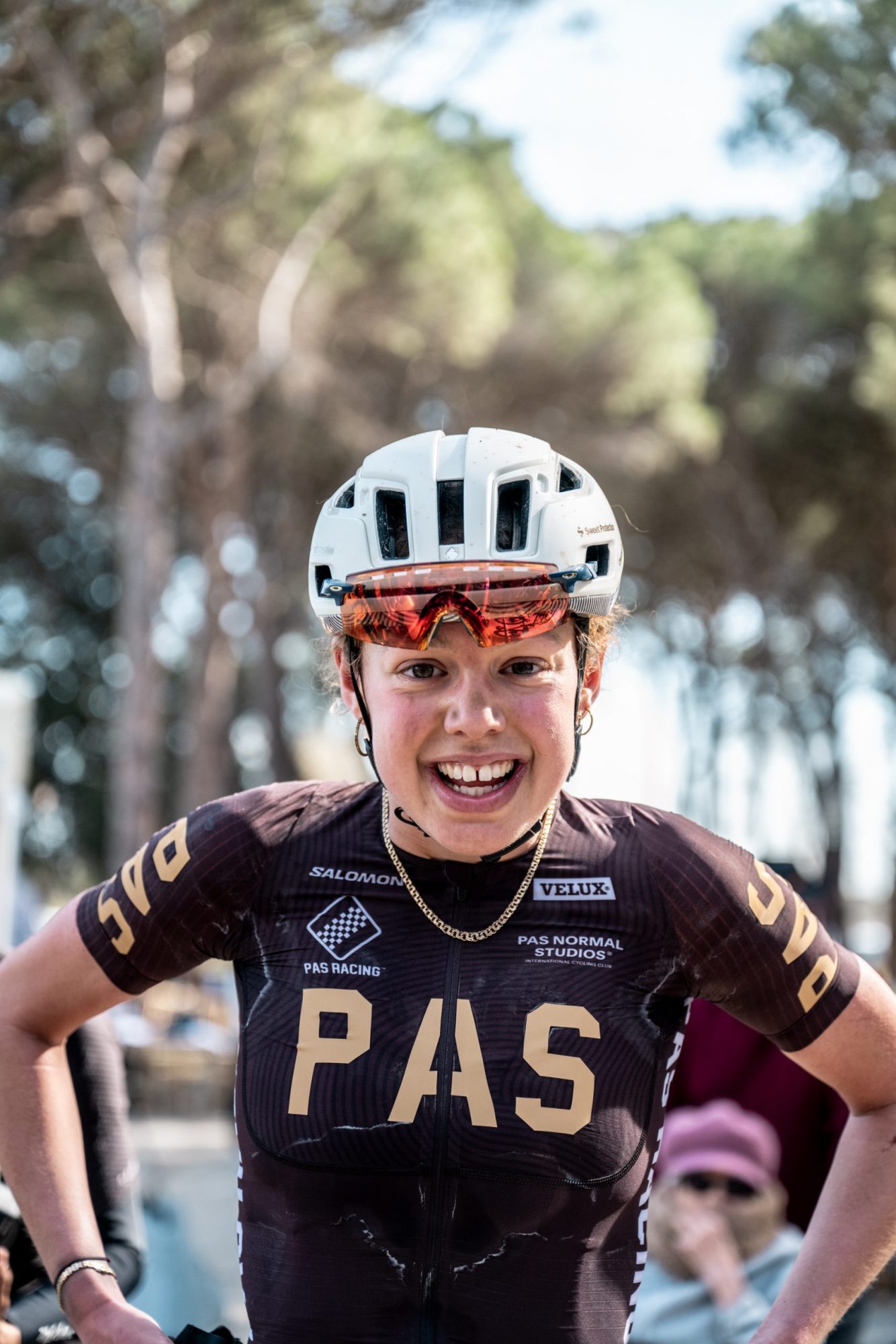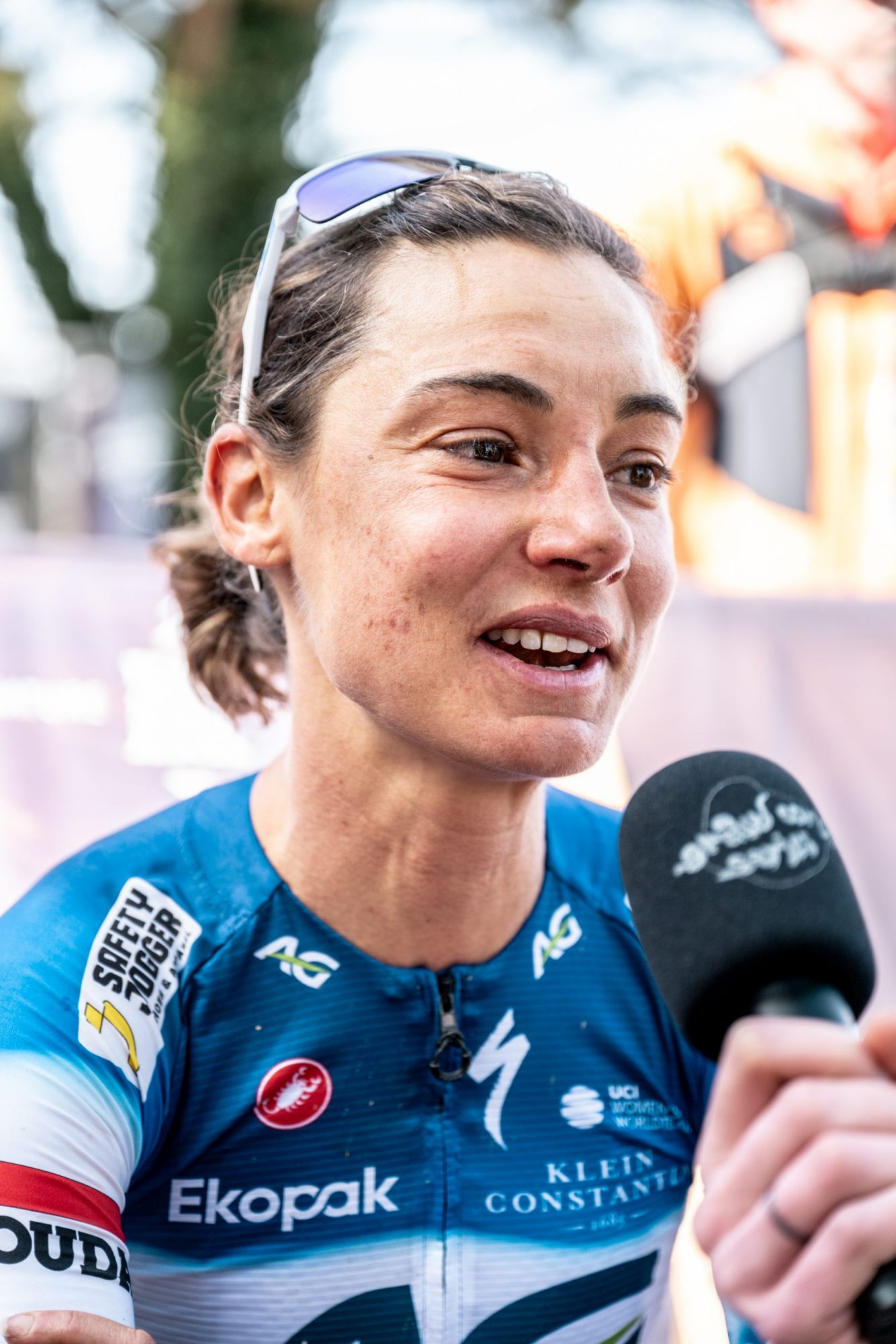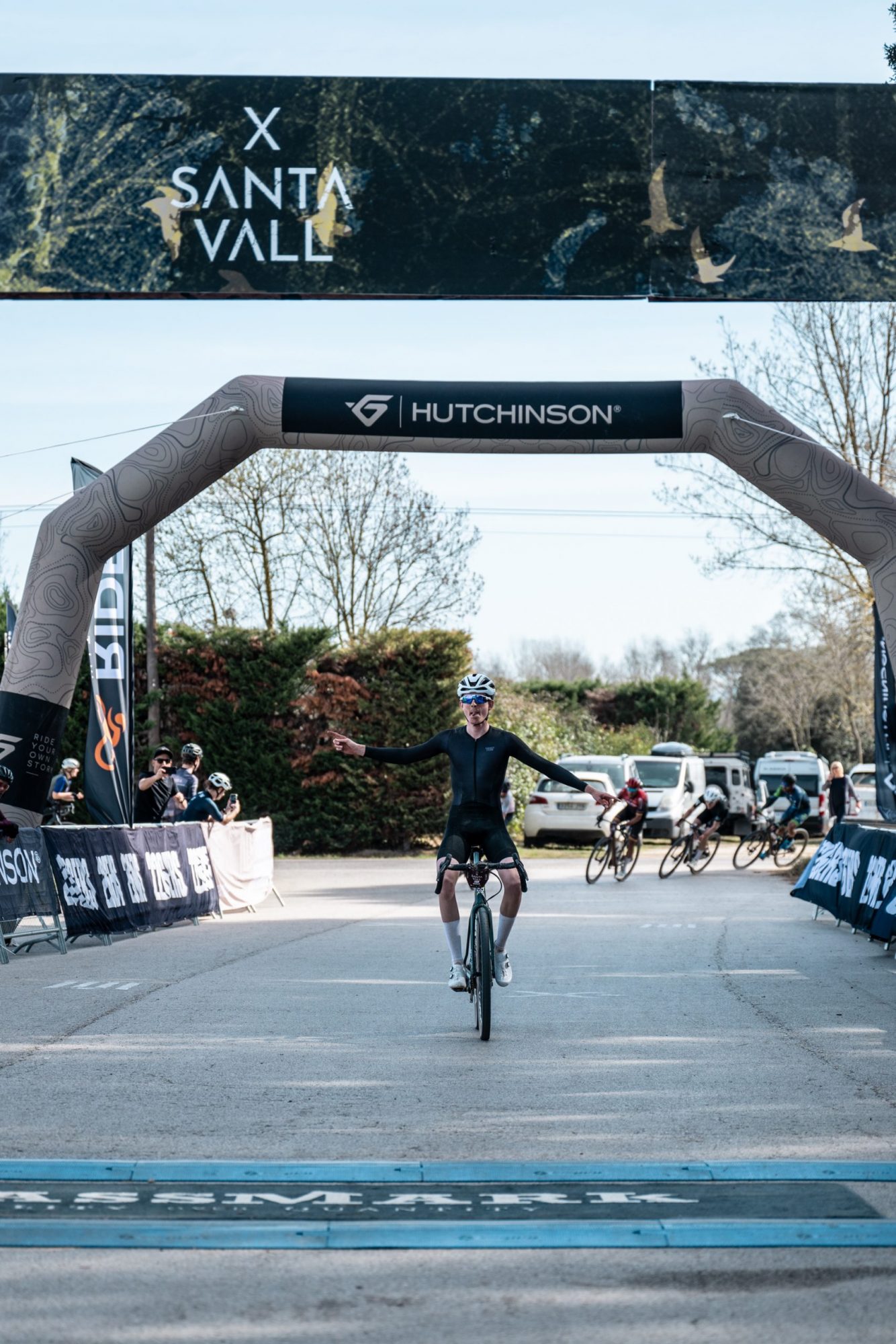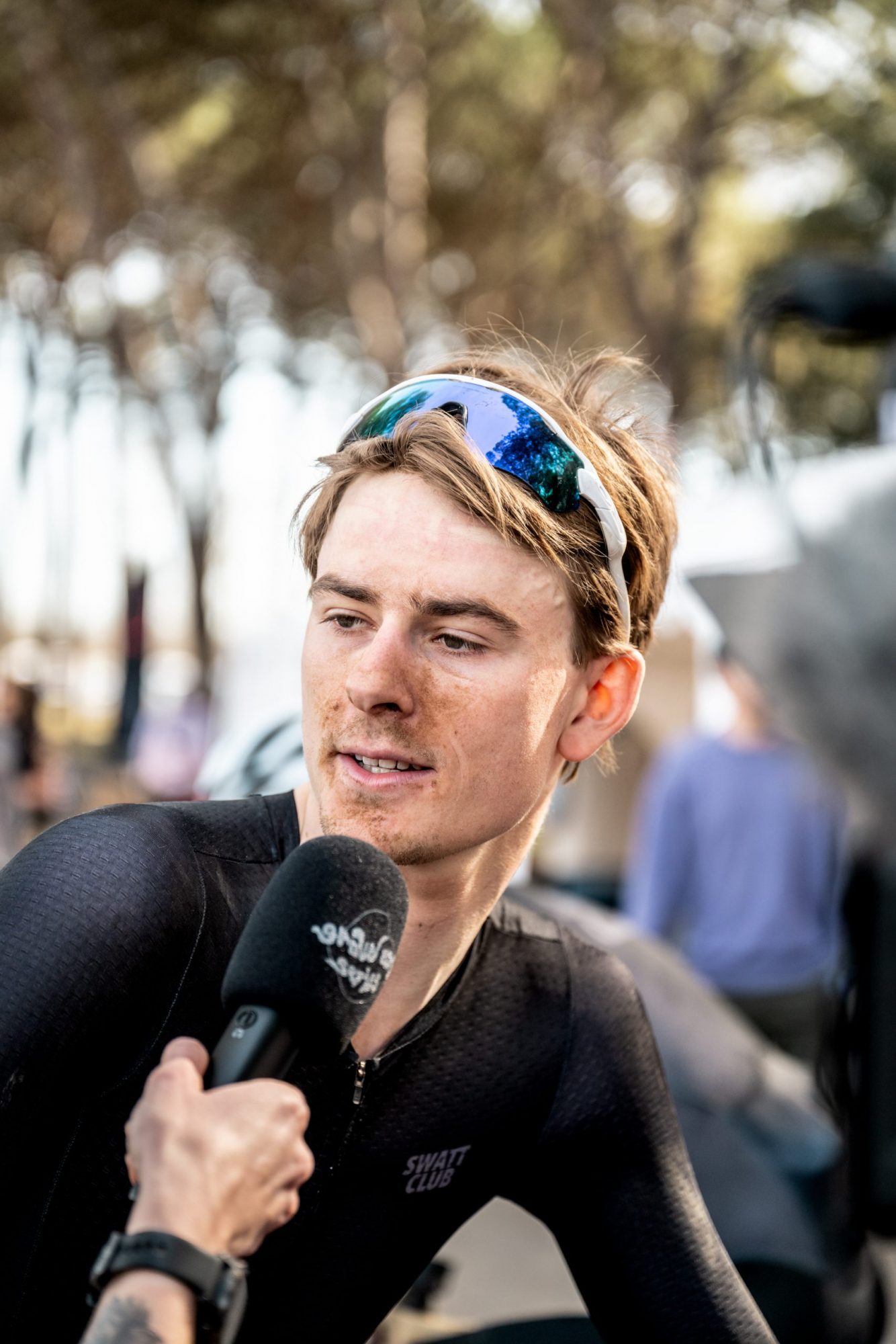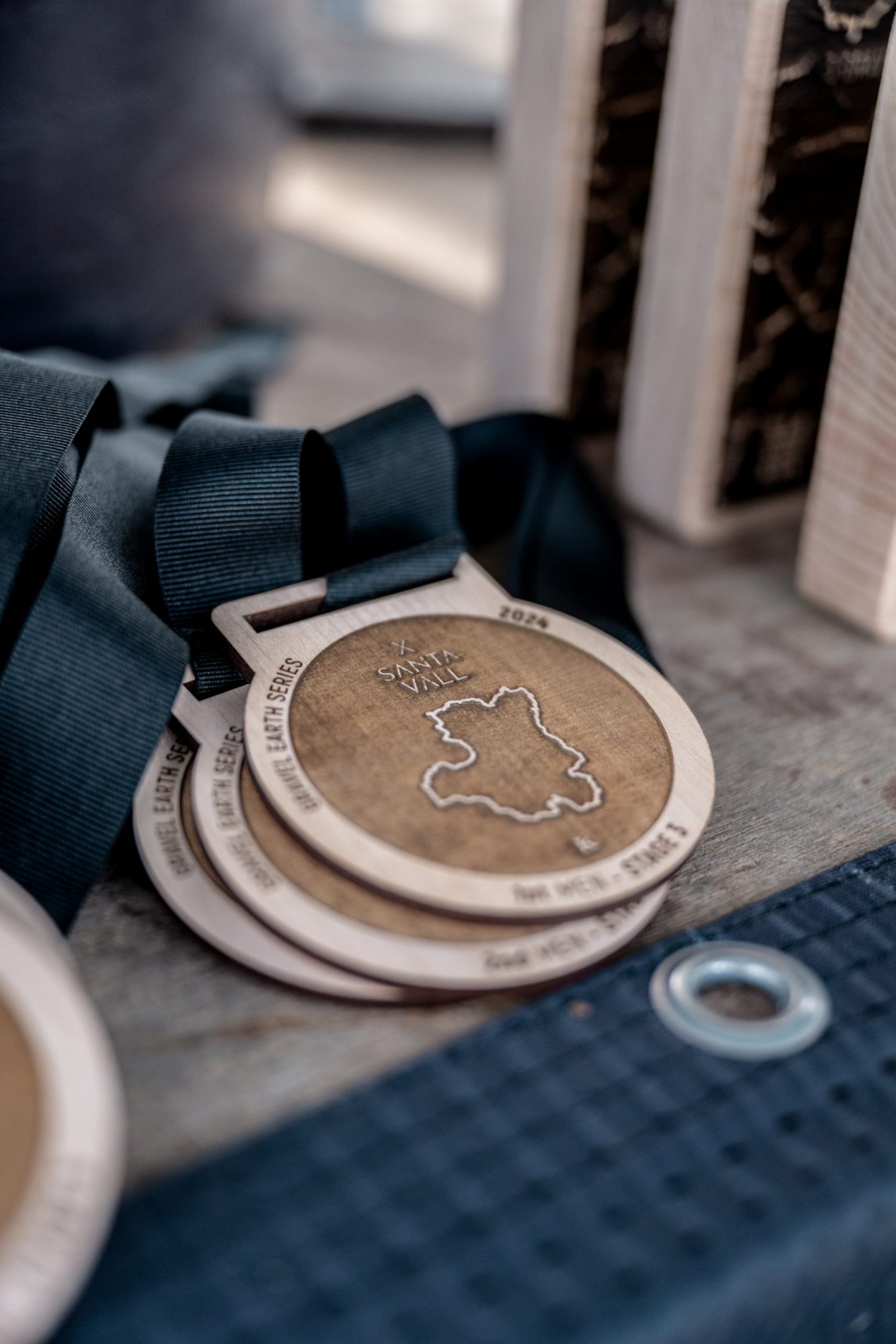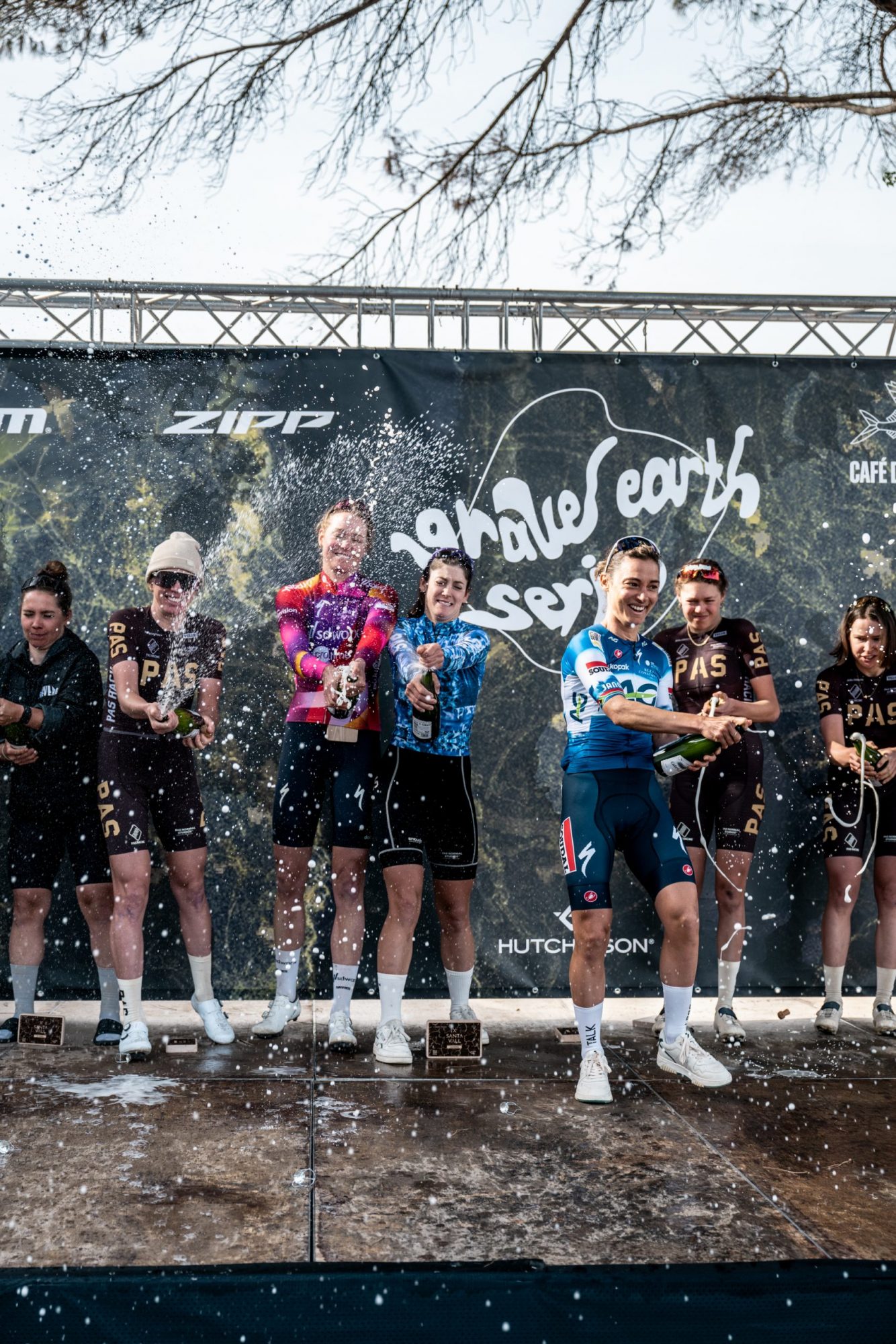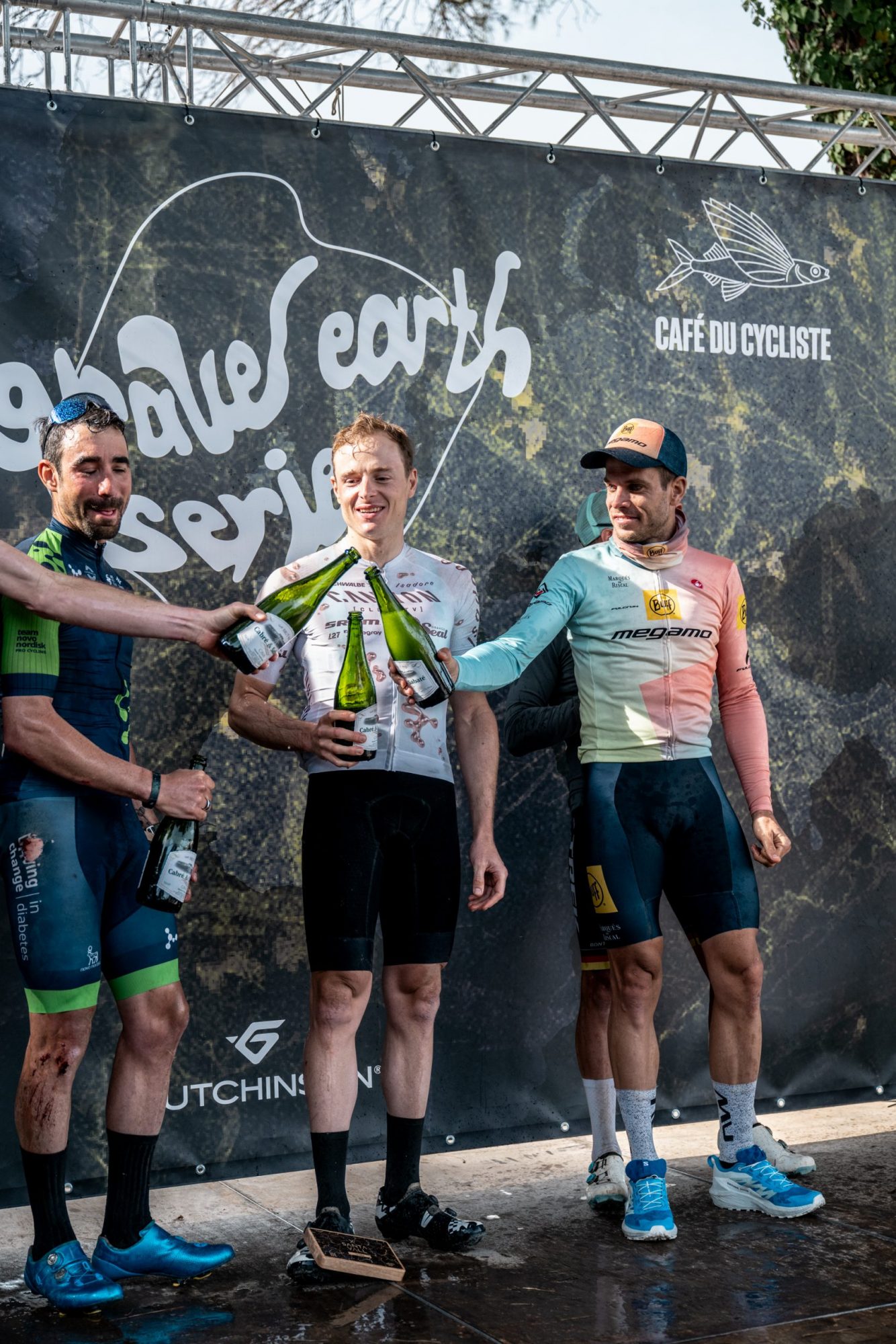Santa Vall was originally a mountain bike one-day race called Gironès MTB Challenge, with local riders and some international figures ripping the singletracks around Sant Gregori, Catalonia. In 2021 gravel came into the picture, and that year the event organized two different races in parallel to accommodate those willing to discover this alternative version of cycling, but also the ones loyal to flat bars. They coexisted until last year, but in 2024 it was all about gravel.
In the same way that road racers say that there are no longer warm-up races on the calendar, we could also see that riders from all over the world arrived to Sant Gregori in top shape and willing to show their skills already in what was the first race of the year for most of them. No place to hide if you didn’t do your homework during winter.
Attracting gravel racers from the entire globe
More than 400 participants from all over the world lined up last Friday, February 16th, for the first of the three stages of the event. The format was new as, in addition to the timed segments stage of the previous year, a hill climb kickstarted the weekend, and a mass start circular loop stage wrapped things up.
Multi-day races are cool because they allow you to spend more time with fellow participants. The basecamp in Sant Gregori also was the perfect setting to spend a lengthy amount of time after each stage debriefing what happened while stuffing your belly with the varied available food and drinks.
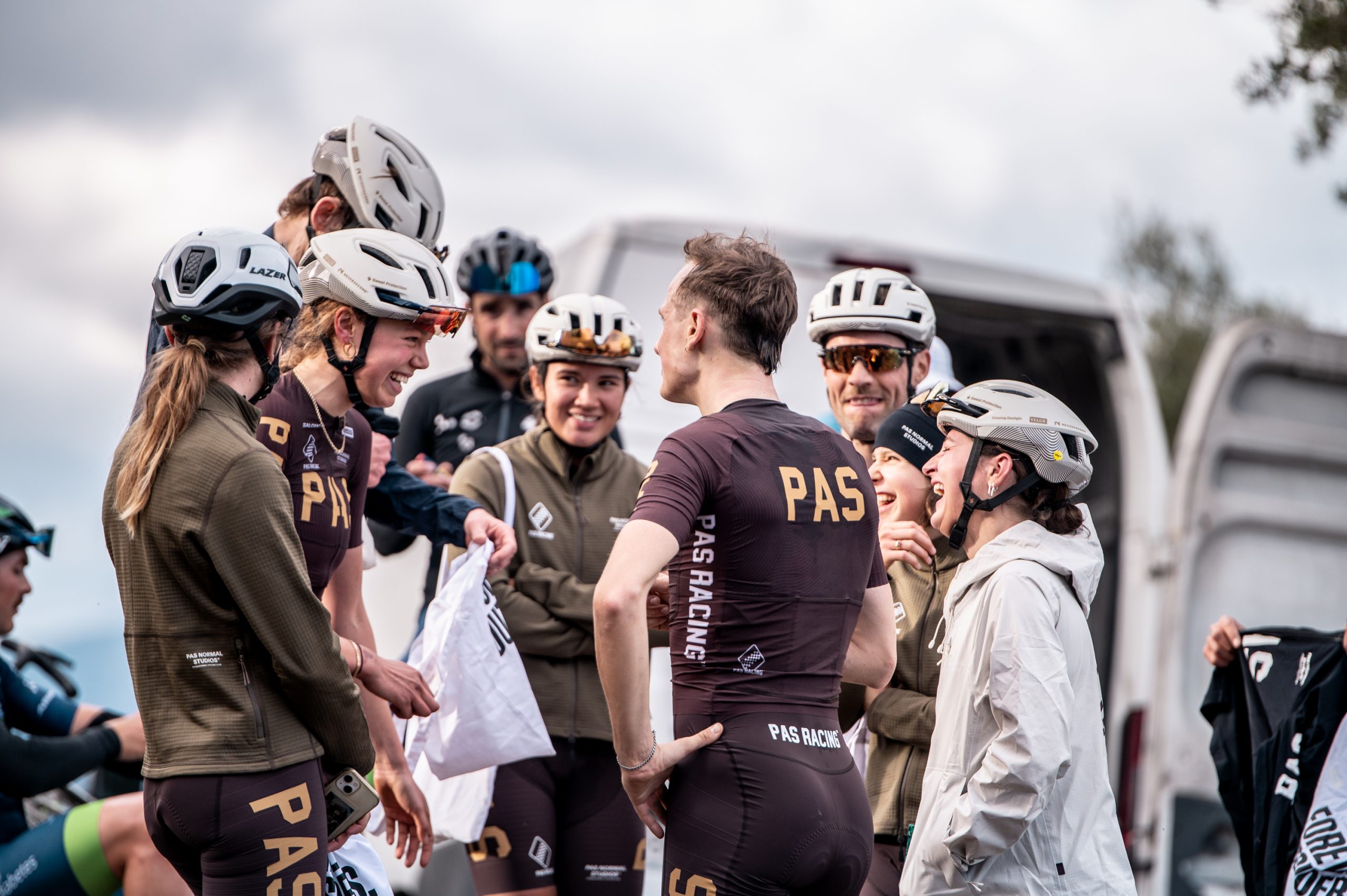
We checked the registration list beforehand so we were already aware of the world-class riders that would battle for the overall win, but seeing them together on the startline was still impressive. From the women’s side, we first focused on the presence of current Unbound winner Carolin Schiff and top international riders like Annabel Fisher and Amity Rockwell. Nonetheless, some underdogs would eclipse them and put their own names in the word of mouth of gravel enthusiasts. Regarding the men, let’s simply name a few of the starters so you can get an idea of the overall level: Mattia De Marchi, Jasper Ockeloen, Payson McElveen, Petr Vakoc, Hans Becking.
Stage 1 | Hill climb
A short but steep hill climb started things off. 6,3 kilometers including 362 meters of elevation gain separated the start in Sant Gregori from the top of Sant Grau. Even if selected riders had their own starting slot, positioning during the initial couple of kilometers on tarmac before hitting the off-road section was key. It was a hectic, cyclocross-style start rather than a chill one.
The climb was far from constant, making it hard to maintain a specific power output. Riders tackled on their way to the top some extremely steep slopes and a technical rocky finish, so the finish line was a spectacle of exhaustion faces.
The women were the first ones to start and among them, Ashleigh Moolman Pasio was the fastest to reach the top. Klara Sofie Skovgard and Morgan Aguirre would also finish on the podium of the first stage, with a couple of other riders missing out by a handful of seconds.
Not long after, Petr Vakoc crossed the line as the first male rider. Joe Laverick was second after leading the race for most of the climb, and Asbjorn Hellemose was third. The three of them share a road background, and it is probably not by chance. They have raced many time trials and they proved they can pace such a max effort. Also inherited from their previous cycling life, Joe and Asbjorn went looking for marginal aero and weight gains by removing bottle cages and wearing skinsuits and aero socks. It is also worth highlighting the atmosphere at the top of Sant Grau, with riders cheering up those who arrived later.
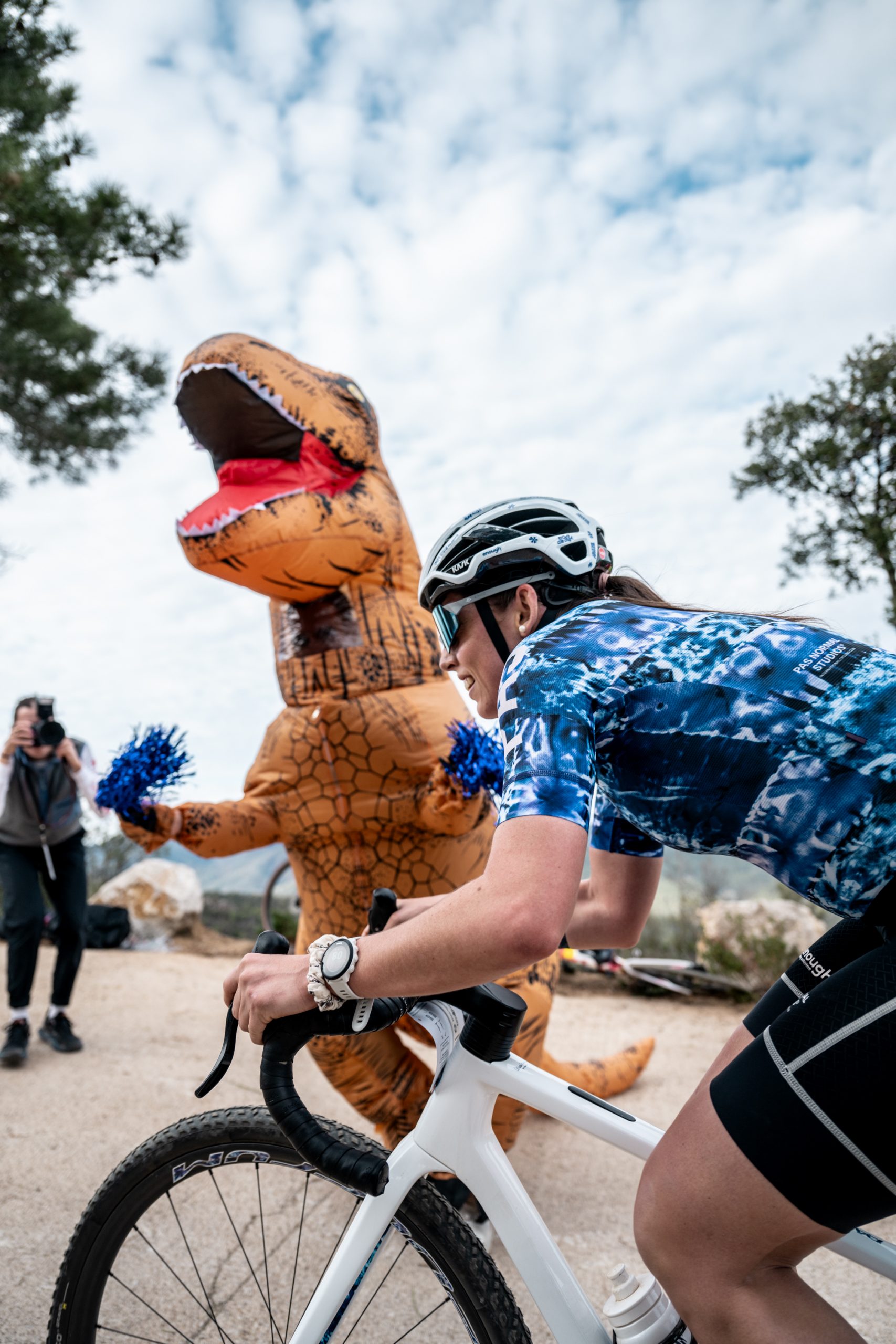
Once everyone cooled down, they descended back to Sant Gregori for the official presentation of the Gravel Earth Series. Santa Vall is one of the 14 events of the Gravel Earth group (there is also a ‘Gravel Earth Global’ group composed of 5 races with more points at stake) and the winners will walk away with 750 points. The final classification includes the two best scores of the year plus the points of the grand final. The teams and individuals who are expected to lead the Gravel Earth Series were also on stage to share their thoughts about this second edition of the series and their goals for the year.
Stage 2 | Timed segments
Taking into account that most riders only got back to the accommodation after 7 PM, it was a matter of recovering as much as possible for the second stage, which started at 9 AM.
The route on Saturday was 72,6 kilometers long with 830 meters of elevation gain. Out of those kilometers, only a part was timed, more concretely two segments of 23 and 25 km in length, respectively. The stage classification was determined by the sum of the two aforementioned segments.
In theory, it was an open start, with the riders outside the top 50 being able to choose to start at any point between 9.15 AM and 10 AM. However, most of them initiated their effort as soon as the gate was open.
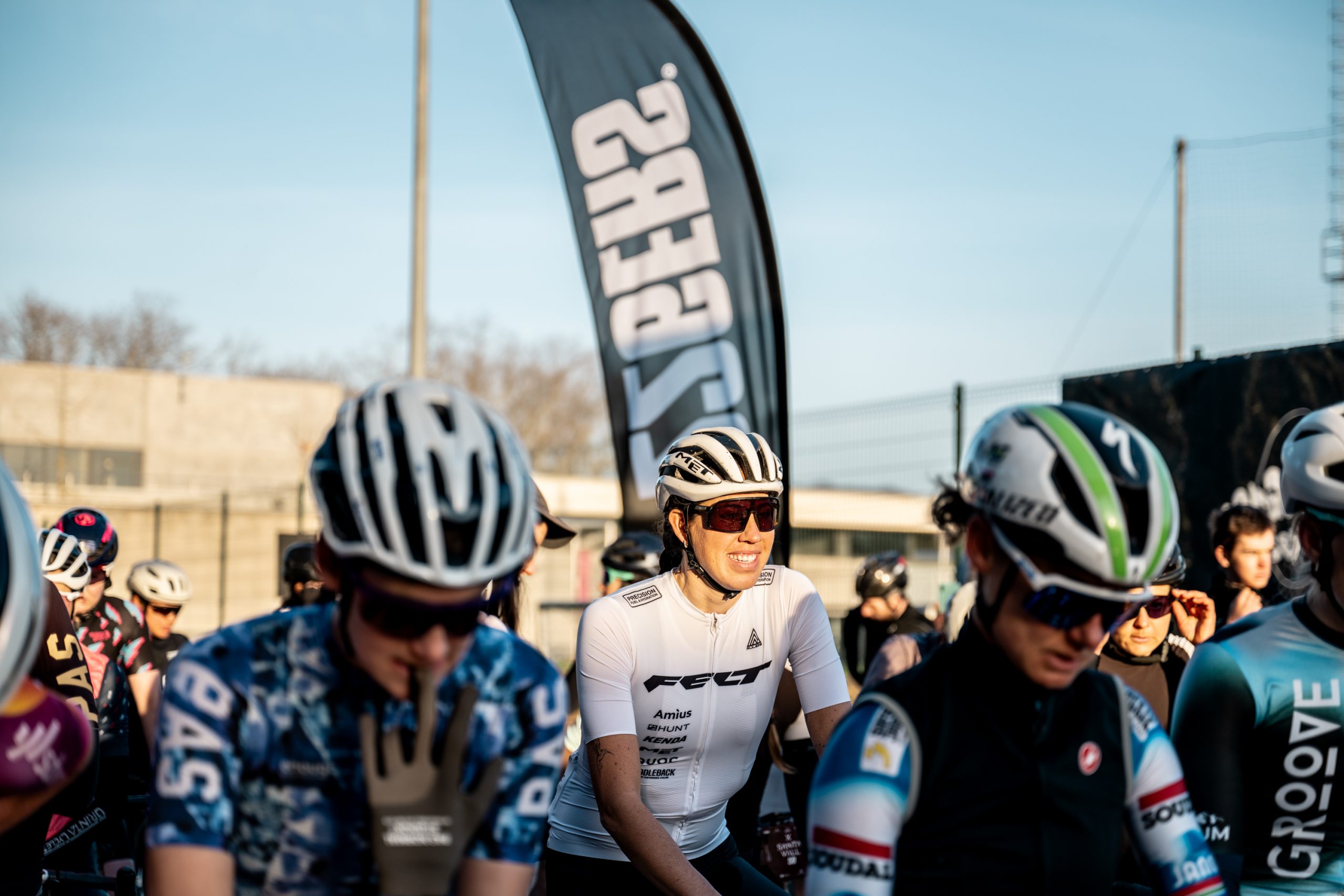
The approach to the first segment was mainly flat and part of it followed the famous Via Verde, open to the traffic of local cyclists and hikers. The pace in the top-50 male group was conservative but a big group of riders coming from the open start really pushed through the neutralised section and, not long after the start of the first segment, they caught part of the elite peloton. In contrast, we could also see how Asbjorn Hellemose, third on stage one, let the front group go to initiate the effort on his own, hoping for a clean run.
As you can read, riders followed different strategies, some pushing only on the segments and others barely pressing the brakes in between. That led to a big regroup before the start of the second segment, and riders found it difficult to know where they were in the standings at that moment.
Those who signed up for the race expecting smooth gravel paths for three days in a row were caught by surprise, and some of the climbs and descents were quite technical. There were even a couple of spots in which there was no other option but to jump off the bike and push it up the narrow, steep slopes. On the one hand, those racing with road shoes struggled and reconsidered their choice for the next day. On the other hand, some riders, either because they are Girona residents or they arrived to Catalonia with enough time in advance to reccon the race, were already aware of some of the ‘traps’ that the organizers included in the route.
At the finish line, we saw several riders approach Gerard and say “thank you” to him for spicing up the course. It is also possible, very possible, that others thought completely the opposite. The other topic of conversation was the exceptionally high level of the riders taking part in the race. They even had to start with the awards ceremony almost an hour earlier than planned because the riders arrived much earlier than expected.
The time of the segments was added up and the stage classification was set, so it was time to call on the podium the fastest three riders per category. Hans Becking was the fastest across the segments and reduced his deficit in the general classification to four mere seconds. David Lozano and the leader of the overall, Petr Vakoc, rounded up the podium of the day. Morgan Aguirre also threatened the lead of Ashleigh Moolman by covering the two timed segments in the fastest time, but Ashleigh, who finished third on the stage, would start the last day as the one to beat.
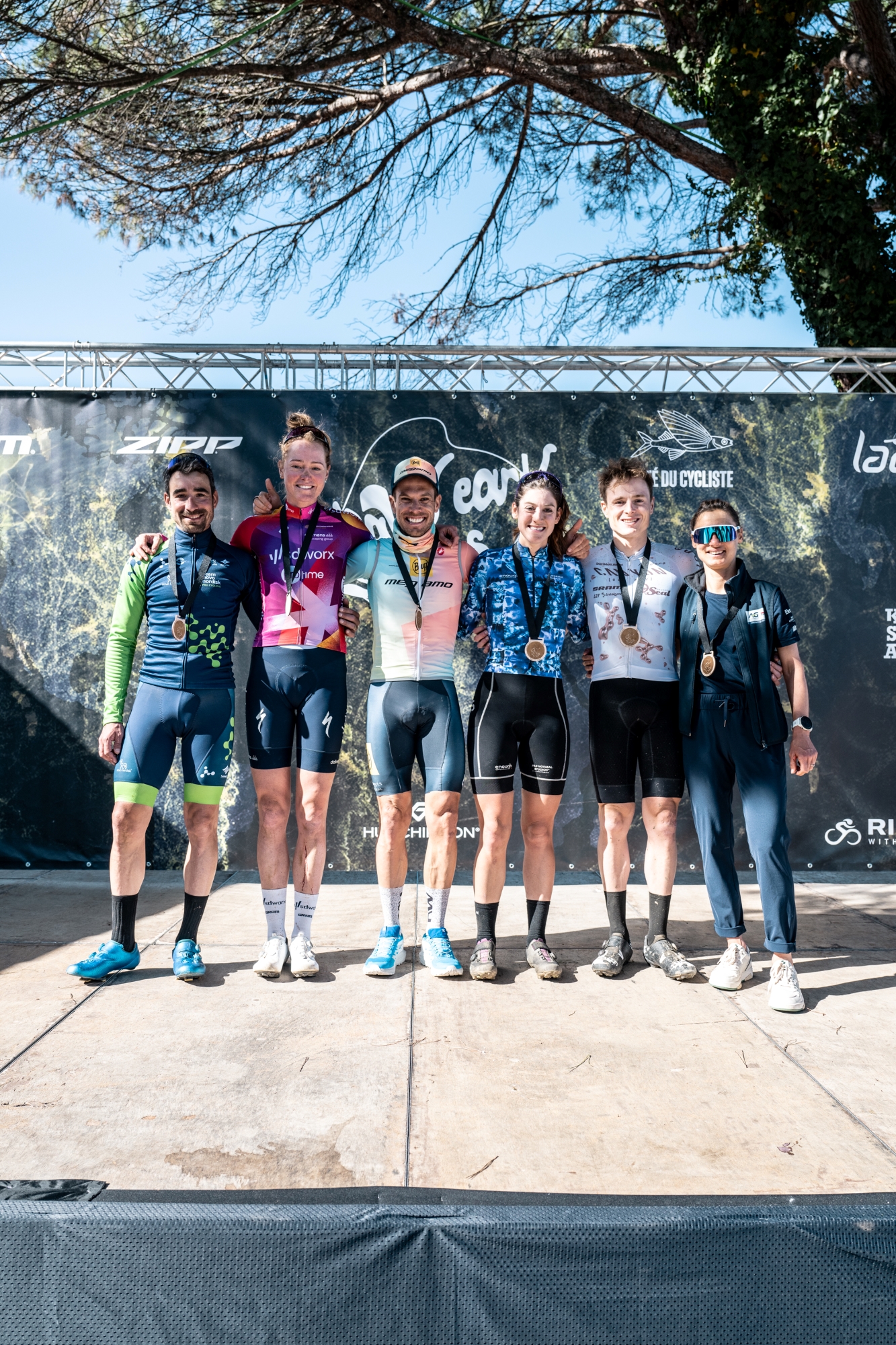
Stage 3 | Mass start
The last of the three stages was a 115 km loop in which most of the elevation gain was in the first third. Multiple climbs, some of them on tarmac, were immediately followed by some technical descents that tested the skills of the riders, creating the splits that would be decisive for the stage and overall win. Many participants went over the limit trying to follow those at the front and ended up on the ground.
Riders linked the well-known climbs of Els Àngels and Santa Pellaia via wide gravel paths, and then descended to Cassà de la Selva. They would then ride on an exposed, flat area for several kilometers before tackling the last hurdles ahead of the finish in Sant Gregori.
The women started at 8.30 AM, one hour before the men, and the leading group held a big part of their gap, while the others were caught by the fastest men at some point during the race. That allowed us to cover the finishing moments of the top finishing women, record their impressions about the day, and fix our attention back to the finish line ahead of the men’s arrival.
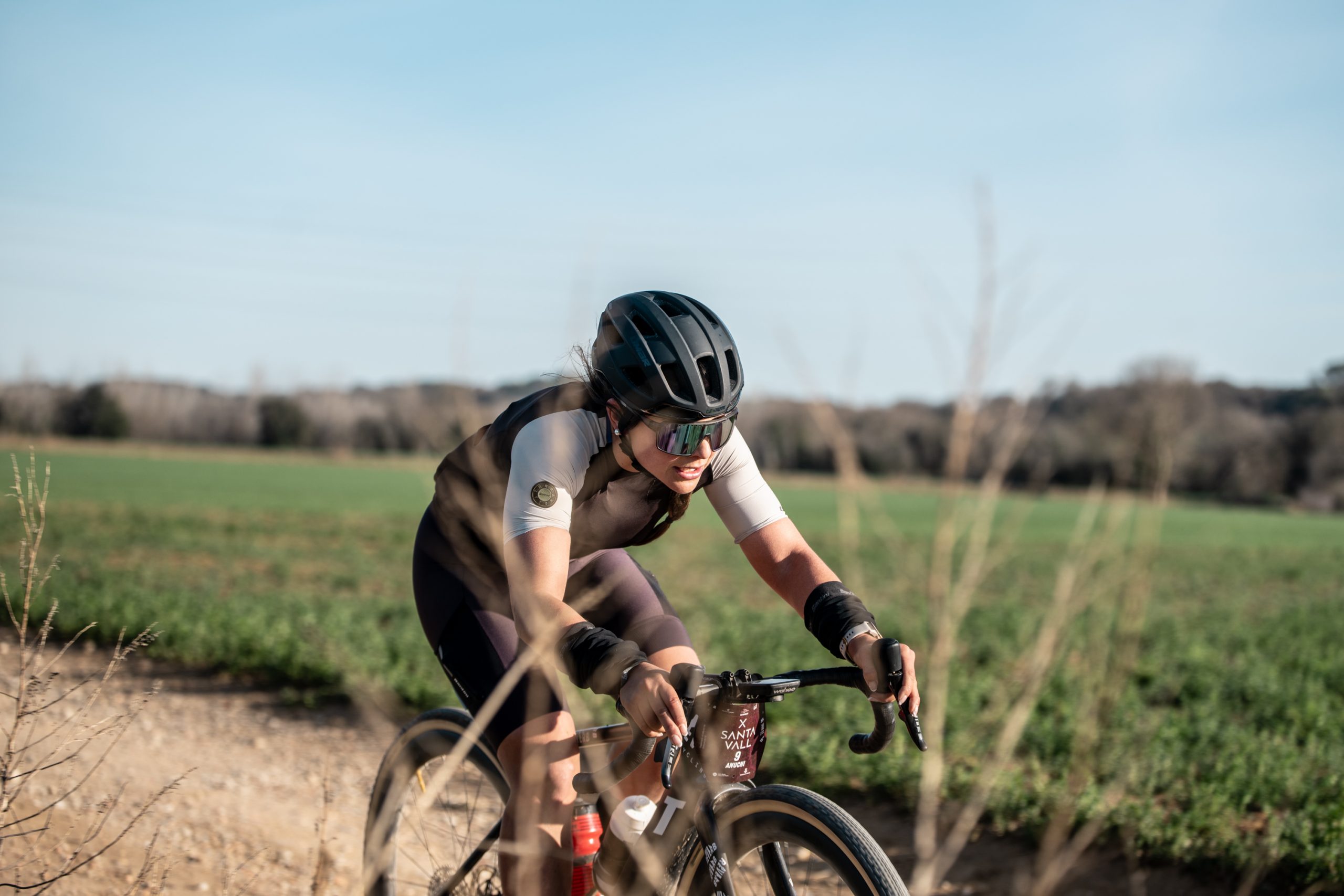
Both races went down to the wire. Ashleigh Moolman and Petr Vakoc, who started the day as the leaders of the general classification, knew that by staying with the leading group they would seal the overall win, but all the others had to try something if they wanted to leave Santa Vall with at least a stage win in the bag.
Ashleigh was feeling so good that she even tried going solo, and at km 43 she had a comfortable gap. She was caught on the long flat stretch by the chasing group of four riders, and the five of them cooperated as if they were teammates. Then it was all about tactics and Geerike Schreurs managed to create a gap in the last few hundred meters that she was able to hold until the line. It was really inspiring to see them congratulating each other and sharing a laugh.
At around 1 PM, the speaker announced that the leading men were approaching the finish line. From the distance, we saw Asjborn Hellemose with just a small gap to the chasers, and he barely had time to raise his hands in the air and celebrate the win. Behind him, Jasper Ockeloen won the bunch sprint and Sascha Weber rounded up the podium.
Once the dust settled
Over the next couple of hours, the venue in Sant Gregori was populated by riders finishing their remarkable effort, and the friends and relatives who wanted to feel part of the big gravel community fostered during the weekend.
After the final podium ceremony, which awarded Ashleigh Moolman and Petr Vakoc as the winners of Santa Vall, everyone started heading back to Girona. By the end of the weekend, those staying in the European cycling mecca would know the 5 km commute from the city to Sant Gregori like the top of their hand.
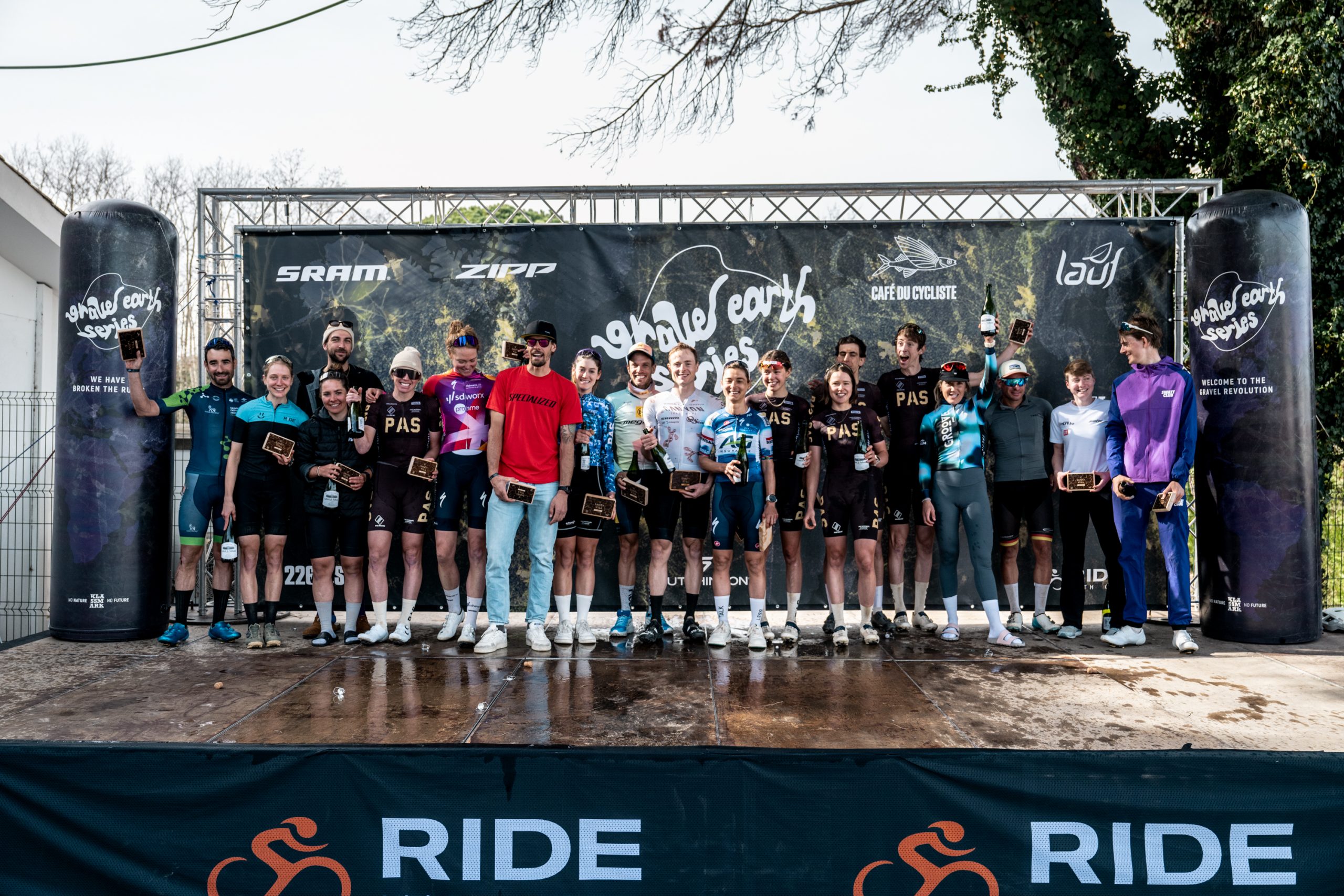
All in all, riders returned home with a good dose of racing in the bag and, given that the major events will only resume in late April, they will fine-tune their preparations and return to competition as fit as possible. Brace yourselves, as these gravel racers are very, very strong.



